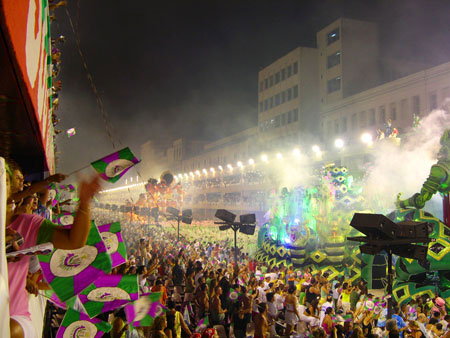Large festivals attract huge crowds and countless photographers, both professional and amateur, so obtaining good photographs requires careful preparation and planning.
The first step is to research the details of the particular event. Find out not only when and where it will take place, but also what the celebration is about. Only with a basic understanding of the significance of an event can a photographer hope to capture the key events and participants in worthwhile images. Also try to get a reliable weather forecast and go prepared. If the light is expected to be strong and harsh, think about how and when to use fill flash. If the day is overcast or dull, you might decide to use a powerful flashgun and work reasonably close to your subject, or just accept the dull conditions and limited contrast. The use of flash constantly draws attention to your activities. After dark be prepared to set a very fast ISO setting or use flash all the time, but remember that flash can kill the atmosphere created by coloured lights etc and also imples the use of slower shutter speeds.
 |
| Image by kind permission of Raquel Teixeira |
Think about what camera equipment will be required and how to minimize the number of items carried. In general, a wide-angle zoom with a large maximum aperture is the best option but its does imply the nedd to get involved in an event as much as possible. Set reasonably high shutter speeds to freeze movement and shoot in RAW mode. This is preferable to JPEG mode because it maximizes the range of adjustment available at a later stage. Take plenty of memory cards because it may be necessary to use rapid-fire techniques to take numerous frames per second. The use of a tripod should not be attempted. Tripods are not only impractical in a large crowd but may also be a safety hazard for others.
One other aspect of the planning and preparation process is to decide how to secure valuable equipment from thieves. it is a sad fact that every crowd includes a number of dishonest individuals who may, given the chance, relieve you of a lens or two. The best approach is to minimize the equipment carried, secure it to your person where possible, and keep valuables out of sight when not in use.
Finding a suitable viewpoint for photographic work may also be a challenge. Some people arrive early and occupy the obvious vantage points, so choice may be limited. A key consideration is of course the nature of the event. If the central activity consists of a parade, it may be possible to find a single location with a reasonably good view and remain there throughout the event. If the event is centred in one location, and does not progress through the streets, a better option may be to move around and find a variety of viewpoints.
For a passing parade or procession, look for an observation point that provides as clear a view as possible, ideally in more than one direction. Also try to find a slightly elevated location such as a low wall or just a couple of steps that allow the camera to be raised above the heads of other people. Locations that provide some shelter from moving crowds are generally an advantage. Position yourself in a doorway or against some item of street furniture to reduce the number of directions from which people can approach.
Another approach when photographing a moving parade or protest march is just to flow with those involved. Use a wide-angle lens, get close to the action and keep moving around to avoid irritating any of the participants. In the case of protest marches, some participants start out angry so sensitivity is required when approaching them.
Whatever approach is adopted, be sure to incorporate a variety of images in to your coverage of the event. A few broad images of the overall scene and the vast crowds may be of some interest, but the true character of the day is best revealed by more intimate closer shots. Using a telephoto lens to pick out particular people or activities is a perfectly valid technique, but the most successful photographers get involved and up close with a wide-angle lens. From within a crowd it is possible to capture the feeling of the event - the passion, the anger, the congestion etc. It is of course impossible to control the activities or the way the light falls on any aspect of the event, so it is necessary to learn how to make the best of available circumstances. If the light is in your face, use it to advantage. If it rains on the parade, capture the very human reactions of the participants and the crowd as people struggle to keep dry.






